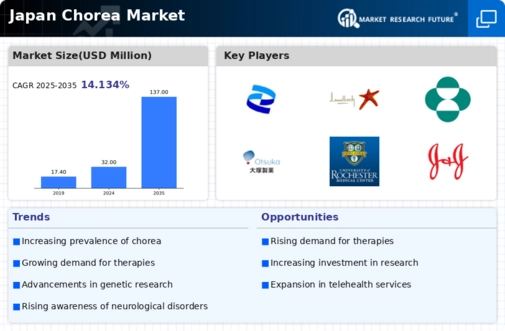The Japan Chorea Market is currently witnessing several important market trends influenced by both demographic changes and advancements in healthcare. One of the key market drivers is the increasing awareness and early diagnosis of chorea-related disorders, which has been facilitated by government initiatives aimed at providing better healthcare education. Japan's aging population is contributing to a rise in neurodegenerative diseases, thereby propelling the demand for effective treatment options and management solutions for chorea.
This demographic shift underscores the importance of tailored therapies that address the specific needs of Japanese patients.In the Japanese market, there are also numerous opportunities, particularly in the development of personalized medical approaches. By combining genetic testing and targeted therapies, it is possible to provide patients with personalized treatment regimens, thereby improving their outcomes.
Additionally, by fostering collaboration between pharmaceutical companies and research institutions in Japan, innovative solutions may be developed that not only enhance the quality of life for patients but also broaden the therapeutic options available in the market. Recent trends suggest that there is an increasing interest in non-pharmacological therapies, including occupational therapy and physical rehabilitation, as these methods can enhance traditional treatments and potentially result in improved patient management.
Furthermore, the utilization of technology in the monitoring and management of symptoms, such as wearable devices, is gathering momentum in Japan, meeting the requirements of both patients and healthcare providers. The growing support for patient advocacy groups is promoting a more robust dialogue regarding chorea, which is enhancing awareness and promoting additional research in this field. In general, the Japan Chorea Market is undergoing rapid growth, but it continues to prioritize patient-centric strategies that incorporate both conventional and innovative treatment modalities.














